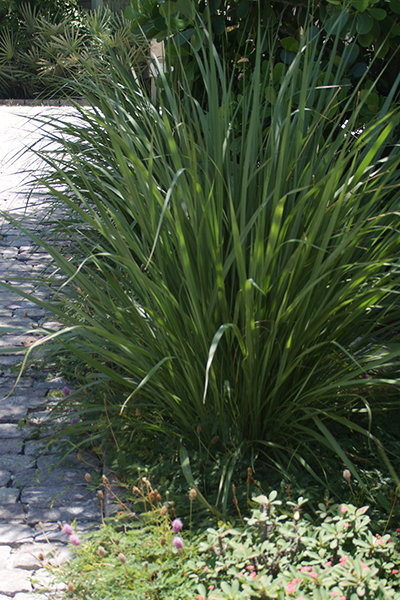Fakahatchee Grass

Fakahatchee Grass Potted
Tripsacum dactyloides
Fakahatchee Grass, or Gamma Grass, is a Florida native that is gaining popularity among gardeners. It has deep green spiky foliage that clump together to create 5 – 6 foot tall masses and in late spring to mid-summer, rust-colored flowers appear on long slender stems that rise above the foliage.
This grass prefers to grow in full sun to partial shade. It grows best in fertile soils but will tolerate most soil as long as its moist. When Fakahatchee Grass is exposed to frosts, the leaves take on shades of red and bronze. It is receptive to cold weather and although it will freeze to the ground, it will return in spring when the temperatures warm up. Many times in the spring or late summer, Fakahatchee Grass will be cut down to its base in order to allow for fresh leaves to grow.
Fakahatchee Grass has a very high tolerance to flooding. This makes it an ideal plant to give extra interest and mass to wet areas, drainage ponds and near small creeks and streams. Compared to its dwarf counter part, Fakahatchee Grass has slightly thicker leaves and a much larger mature height. Whereas Fakahatchee Grass matures at 5 – 6 ft. tall, the dwarf relative matures at 2 – 3 ft.

Ornamental Characteristics:
Native Origin:
Florida
Common Names:
Gamma Grass, Florida Gamma Grass, Eastern Gamma Grass
Description:
Hardy Range: 5 – 10B
Mature Height: 5 – 6’
Mature Spread: 5 – 6’
Growth Rate: fast
Growth Habit: round
Ornamental Characteristics:
Fakahatchee Grass is characterized by flat blades of grass that grow from a short, thick, underground rhizome. This grass attains a height of about 5 to 6 feet and spreads to form a clump up to 6-feetwide. The flowers appear in somewhat showy spikes, with rust-colored anthers. These spikes appear in the spring and summer.
Environment:
Soil: extended flooding; acidic; slightly alkaline; sand; loam; clay
Salt: low
Exposure: full sun to partial shade



